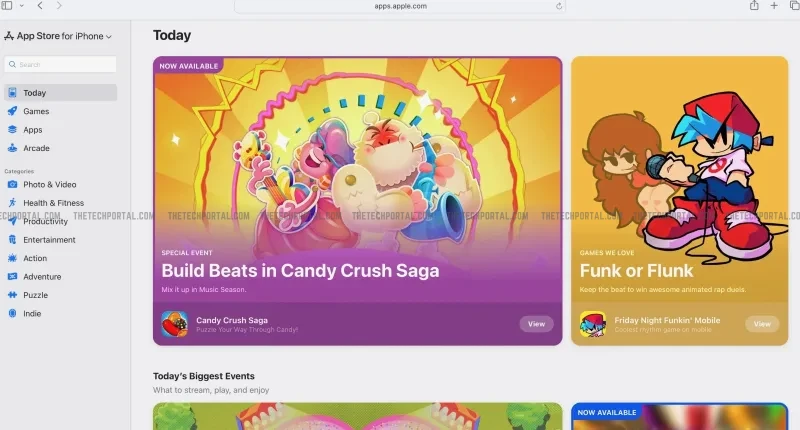Apple has finally brought its App Store to the web. The firm has now launched a full-featured App Store on the web, offering users a central hub to browse apps across its ecosystem, without having to go through the painful process of redirection to app store download, whenever you searched for an app.
The new apps.apple.com site, unveiled this week, replaces what was previously a static information page with a modern, searchable interface that mirrors the App Store’s in-app design across iPhone, iPad, Mac, Apple Watch, Apple TV, and Vision Pro platforms.
The update marks the first time in the App Store’s history that users can explore the marketplace directly through a web browser, without relying on an Apple device. While users still cannot download apps directly from the browser, the site provides detailed listings, rich media previews, and links to open or share apps via native App Store apps. The new web App Store introduces a clean, responsive interface designed to make browsing easier for both Apple users and outsiders looking to research apps. A drop-down menu in the upper-left corner allows visitors to switch between different platforms, while the “Today” tab features curated recommendations, editorial content, and event highlights — just like the experience on Apple devices.
App listings now include categories, editorial features, and search filters by genre, from productivity and education to adventure and entertainment. Users can also view App Store Awards and developer highlights directly from the web interface, part of what Apple calls its effort to make “discovery more accessible.” For developers, the searchable, structured web interface improves discoverability. Apps that were previously hidden behind Apple’s native software now have search engine visibility, meaning potential users can find them directly through Google or Bing. This increases the traffic to Apple’s ecosystem—benefiting the company through higher engagement and potential App Store revenue.
Previously, Apple hosted individual app pages online — typically reached via search engine results — but offered no centralized or searchable storefront. Those links often redirected users into the native App Store app, or in some cases, to broken or non-functional pages on non-Apple hardware. Now, Apple’s web version brings parity with its native experience, enabling users to browse seamlessly, even on Windows or Android devices.
For years, Apple’s tight control over app distribution — particularly on iOS — has been a focal point of antitrust investigations and court rulings. Regulators have argued that Apple’s App Store exclusivity unfairly limits competition, prompting new laws such as the EU’s Digital Markets Act (DMA), which requires Apple to allow alternative app stores and sideloading on European devices. Apple itself has not commented on whether the web App Store was developed in response to regulatory pressure.
Apple’s new search interface is among the most notable upgrades. Users can now search directly within the web App Store, filtering by platform, developer, or keyword — functionality that was absent before. Each app’s product page features larger preview images, video trailers, and metadata sections for user ratings, compatibility, and developer information. The design incorporates elements of Apple’s refreshed aesthetic language: rounded edges, minimalist typography, and subtle animations that mimic native iOS behavior.
This comes after the company has faced mounting developer criticism over discoverability, competition, and commission fees, and has earned the ire of several regulatory authorities across the globe. A web-based interface — even one that doesn’t yet enable downloads — allows Apple to showcase apps more openly to non-Apple audiences, potentially benefiting smaller developers who rely on visibility outside the iOS ecosystem. Currently, the web App Store is strictly a browsing and discovery platform. Users can view, share, or open apps on their devices, but cannot purchase or install apps directly from the web.
The Tech Portal is published by Blue Box Media Private Limited. Our investors have no influence over our reporting. Read our full Ownership and Funding Disclosure →






